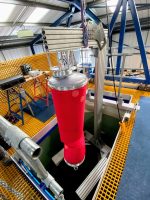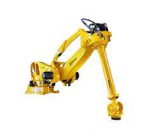Robotic solution to nuclear waste
An innovative robotic solution to mapping and segmenting different levels of nuclear waste without the need to put humans into a hazardous radioactive environment has been proven by a pioneering company. Createc is behind some of the world’s most advanced technologies in robotics and computer imaging and is well-known for finding solutions to some of the world’s most complex industrial challenges. Createc’s Automated Nuclear Detection Cell (AND-C) innovation responds to the challenge of removing nuclear workers from hazardous environments by providing a system that can remotely scan items for radioactive contamination and then automatically remove the contamination. Createc’s technology involves an AND-C sensor pack being deployed on a robotic arm. The sensor scans the contaminated item and the 3D radiation contamination map is transferred directly to the robotic system to guide the arm to the precise location and remove the contamination. The AND-C system allows remote radioactive decontamination without requiring operators to work inside a hazardous nuclear environment. In many nuclear decommissioning facilities, a decontamination cell is used to process transport containers on site so that they can be sentenced to low level waste. This is labour intensive work which needs to be carried out using complex PPE and sometimes air-fed suits and involves multiple operational teams as well as support staff and radiation protection staff. Combining Createc’s proven technology for radiation mapping with nuclear robotic arms means the precise location of the contamination can be identified and removed without having to put nuclear workers into this hazardous environment. It means operations can be carried out more safely, sooner and also at less financial cost. Identifying different levels of nuclear waste in this way will result in significant financial savings as it will mean low level waste will not be sent to intermediate level waste facilities unnecessarily. Createc’s tried and tested N-Visage […]









